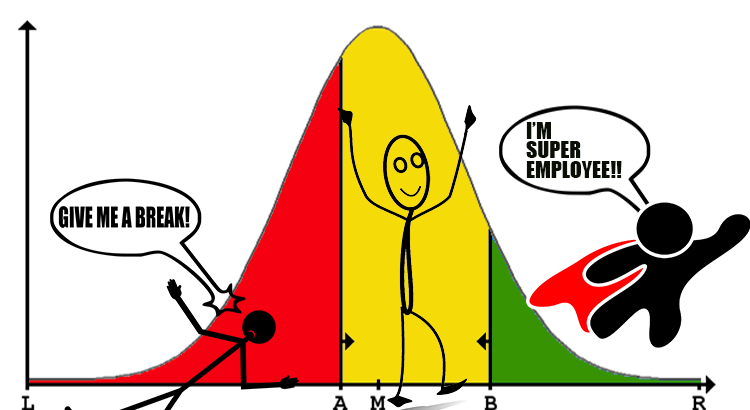Organizations set goals and objectives to accomplish the overall business strategy and create and sustain a high performance workforce. By employing an appropriate performance management approach (PMA), organizations aim at establishing a ‘shared workforce understanding’ about what the firm wants to achieve as a firm. Top executives seek to align the objectives of the firm or the organization with that of the employee’s and their ‘agreed measures, skills, competency requirements, development plans and the delivery of result.’
Generally, firms implement performance management approaches (PMAs) with emphasis on improvement, learning, and development geared towards the realization of the overall business strategy. However, PMA also serves strategic, administrative, and developmental goals.
There are traditional performance management approaches used by firms around the world. However, a new study suggests that these orthodox approaches to performance management are not yielding the desired and expected outcomes; as such, the need to reinvent performance management is imperative. But is there really a need to reinvent PMA?
Gambits in Today’s Performance Management Approach
Performance management takes on many shapes and guises to suit different organizations’ circumstances, beliefs, requirements, and priorities. But for employee development, it answers just three important basic questions:
- What am I expected to do?
- How well am I doing?
- What do I need to develop and improve?
There are various traditional approaches to performance management, and we can sum it up to five types. But we will not be discussing them each. Rather, we’ll talk about the key processes common to these traditional performance management approaches and reason from there.
Types of Traditional Performance Management Approach
- Total performance management
- Skills or competency-based
- Team-driven
- Continuous learning and coaching
- Project-based
In the traditional performance management approach, the key processes involved are usually the following:
- Objective-setting at the beginning of each year for each employee;
- An employee’s manager rates him or her on how well those objectives were met (includes comments on whether the employee did or did not excel);
- A single year-end rating is produced based on numerous ratings throughout the year
Ideally, when performance management is done right, we can be assured, more or less, that (1) we have clarified job responsibilities and expectations, thus (2) have enhanced individual and group productivity as each individual or unit is expected to deliver what is clearly defined as their responsibilities and what are expected of them. Also, successful performance management in the long term (3) develops employee capabilities because of effective and beneficial feedback and coaching mechanisms we put in place. Clearly identifying the goals of the company and the company’s expectations of their employees also (4) drive behavior to align with the company’s core values, goals, and business strategy. In terms of administrative benefits performance management can offer executives is that most of the time, (5) performance management provides the basis for making operational human capital decisions such as pay and benefits. But more importantly, an effective PM approach improves the communication between employees and managers.
Those are the administrative, strategic, and developmental goals performance management serves. But how are we with our performance management strategies and approaches? Are we getting what we want in terms of employee engagement or high performance? How do we evaluate our way of evaluating our employees’ performance?
Challenges Faced by Traditional Performance Management Approach
In a survey conducted by Deloitte, a professional services company based in the United States (one of the Big Four professional services company in the world), ‘more than half of the executives asked (58%) believe that their current performance management approach drives neither employee engagement nor high performance’.
In Deloitte’s report, Ashley Goodall and Marcus Buckingham noted how traditional approaches to performance management have fallen short in achieving its goals due to its past dependency, and one-size-fits-all format.
There’s much sense to that as traditional performance managements approaches as we know them today are overly simplistic, overly quantitative, rater-biased, and is executed from gestalt perspective.
Performance management is often over simplified.
Most performance management approaches take a simplistic model at evaluating performance. These approaches revolve around measures, targets and key performance indicators — a simple one-size-fits-all, closed-loop, feedback model. This works based on the assumption that these basic collections of measures and targets on scorecards are adequate. Oversimplification leads to another mistake: Relying too much on quantitative data alone.
We understand parsimony and the concept of ceteris paribus is important in modeling how stuff works, or at least understanding how. Nonetheless, even in pure social science research, parsimony is no longer enough. Mixed and more elaborate research methodologies are now widely sought for by researchers.
Performance management is often over quantitative, and less qualitative.
Performance management approaches are often designed in closed rooms, focused on simplistic models of influence and change, dealing with “normal populations” (you know.. bells and curves) that ignore that our organisations are full of individual Human beings.
Quantitative measures cover the breadth of a process, or an event we want to understand. But it lacks depth. Only qualitative data can help us probe into the depth of various processes, issues, and relationships. In performance management, we are talking about people. People are complex organisms, and organizations are as complex. As such, mere reliance on metrics and other quantitative measures substantially glosses over gray areas – aspects numbers cannot fully explain or grasp.
Failure to employ qualitative methods in performance appraisal would yield less valuable information, and thus, cannot fully inform and serve the administrative, strategic, and developmental goals performance management seeks to serve.
Performance management is often past-dependent.
In the study conducted by Deloitte in 2015, they found out that current performance management approaches, including theirs, tend to focus too much on assessing past performance, rather than fuelling performance for the future.
When once-a-year-goals are set at the beginning of the year, and ratings are solicited, and a year-end rating report is produced, a sort of past-dependence is in effect. Internal feedback mechanisms like year-end ratings yield less valuable information than real-time feedback during the actual performance.
Performance management is rater-biased.
An interesting finding in the Deloitte study is that we are wasting 2 million hours a year just doing ratings along. And the more depressing part of their study is that at the end of the day, we are not getting the information we need about the ones being rated. Why is this so?
A study by Scullen, Mount, and Goff in 2000 revealed that assessing someone’s skills produces inconsistent data.
Imagine this: Objective as I may try to be in evaluating you on, say, strategic thinking, it turns out that how much strategic thinking I do, or how valuable I think strategic thinking is, or how tough a rater I am significantly affects my assessment of your strategic thinking.
As much as we want employee ratings to be about employee performance, these ratings reveal more about the rater’s regard of the employee being rated. This means that rating reveal more about the rater than they do about the ratee. This means
Although it is implicitly assumed that the ratings measure the performance of the ratee, most of what is being measured by the ratings is the unique rating tendencies of the rater. Thus ratings reveal more about the rater than they do about the ratee.” (Scullen, Mount & Goff, 2000)
Our organizations are complex, and the human beings in it, we, are even more complex. Yet we have business strategies to execute, and goals to reach, and our employees’ optimal performance aligned to our business goals is a vital part of our success as an organization.
So, it is important to pay close attention to and evaluate how we evaluate our employees’ performance. Is our performance management approach nimble, real-time, flexible, and relevant to our organizational structure and dynamics? Is there really a need to reinvent performance management?
Sources:
Scullen, S., Mount, M. and Goff, M. (2000). Understanding the latent structure of job performance ratings. Journal of Applied Psychology, 85(6), pp.956-970. [Accessed through personal subscription]
Harvard Business Review, (2015).Reinventing Performance Management. [online]
Peoplestreme.com, (2015). Explain What is Employee Performance Management ?. [online]
Usfweb2.usf.edu, (2015). [online]
Sagepub.com, (2015). [online]
en Hartog, D., Boselie, P. and Paauwe, J. (2004). Performance Management: A Model and Research Agenda. Applied Psychology: An International Review, [online] 4(53), pp.556-569.
Uminfopoint.umsystem.edu, (2015). [online]


